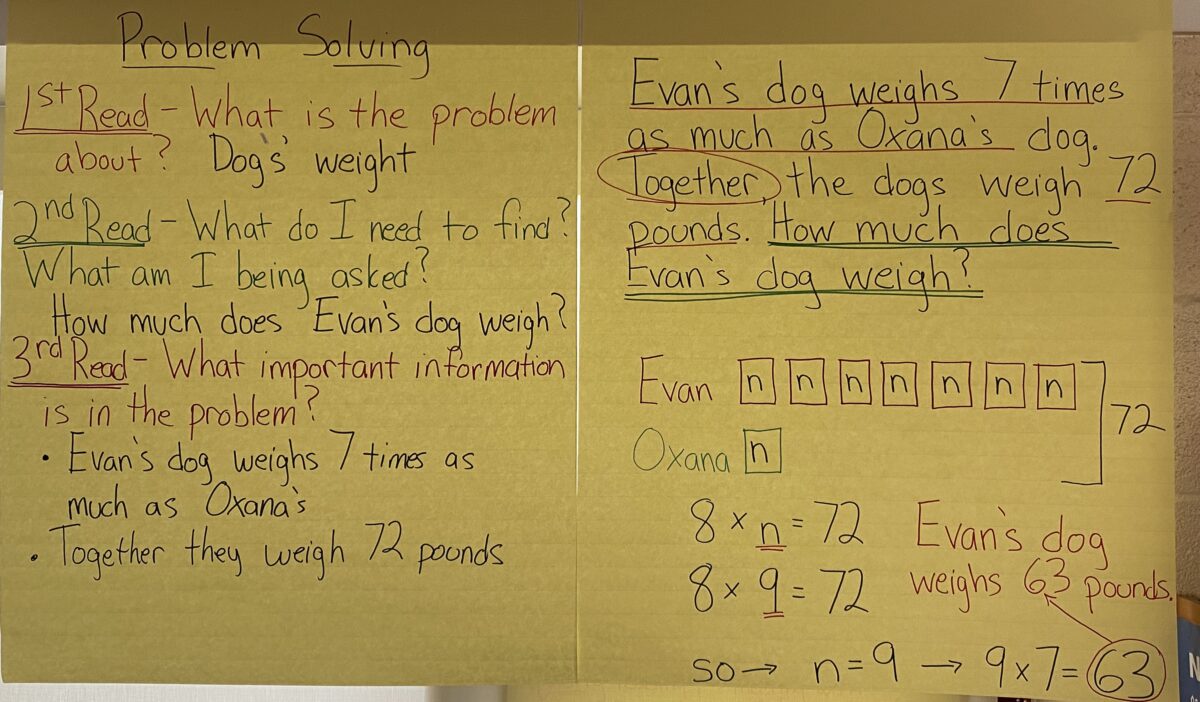I was walking into work one day and a colleague literally came running across the parking lot. She was frustrated and asked, “What in the world is going on with these math word problems?” I looked at her waiting for more detail and trying to not drop my smoothie. “These aren’t math problems,” she said. “They’re reading problems.” She had no idea how correct she was.
Word problems are as much reading problems as they are math problems. One of the challenges with younger mathematicians is getting them to slow down and read problems multiple times to understand the complex structure.
The higher-level thinking problems students are asked to solve go far beyond basic computation (5 x 5 = 25). Students have to read a complex problem, understand the context, know based on that context that they have to multiply 5 x 5, then multiply 5 x 5 to get 25, and finally write an answer of 25 with the correct label. Talk about challenging!
Math word problems are especially challenging for readers because the structure is unlike most of what we teach in reading. The authors of Routines for Reasoning state, “Reading in math – especially reading a math word problem – is different from reading in other subject areas… word problems combine both narrative and expository text… Therefore, word problems must be read several times with a different focus each time…”
In reading, we generally teach narrative OR expository text. In math, students often encounter both types swirled into one problem.
There is another challenge with the structure of math word problems. Students learn in reading that the main idea is generally at the beginning of a paragraph or section of text. Think of the main idea of a math problem as the question being asked. The main idea – the question – is at the end of the paragraph or section of text.
So how do we help our young mathematicians become effective problem solvers? Routines for Reasoning shares a strategy called the Three Reads. This approach requires mathematicians to read a word problem multiple times and sets a purpose for each read.
- Three Reads
- Read 1: Understanding the Context – Focuses on the general idea of what the problem is about.
- Read 2: Interpreting the Question – Determine the question or questions being asked in the problem.
- Read 3: Identifying Important Information – Look for the important information or words in the problem.
Let’s say students are solving this 4th grade released problem from the Pennsylvania state assessment, known as the PSSA:
David started his coin collection with 14 coins. He added 3 coins to his collection at the end of each month for 5 months. How many coins were in David’s collection at the end of the 5 months?
- Three Reads
- First read: David is collecting coins (Don’t worry about any expository text right now. Focus on the narrative. Save the numbers for later.)
- Second read: How many coins were in David’s collection at the end of the 5 months?
- Third read: Collection started with 14 coins; added 3 coins each month; 5 months total
This is a great technique to begin creating effective problem solvers. First, I create an anchor chart, which is pictured, for my students. The anchor chart is displayed in the classroom throughout the year. Next, I model the Three Reads and think aloud my thoughts as a problem solver. This cannot be a once and done process. Students need to see and hear this process multiple times throughout the year with a variety of problems.
I’d love to say that creates problem solvers over night, but it takes time. It takes repetition. It must be persistence and grit. Rome wasn’t built in a day, and neither are problem solvers.
